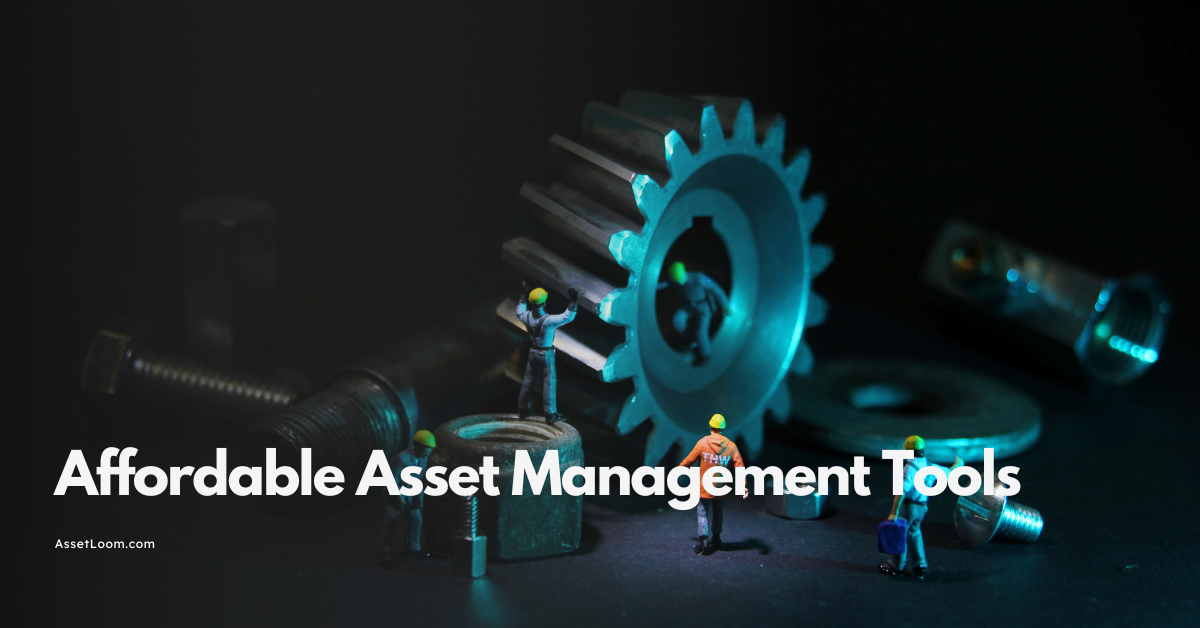Asset Tracking Tags Explained: How They Work and Why They Matter
Asset tracking tags monitor business assets, offering cost savings and efficiency. This guide covers their types, how they work, and tips to choose the right ones.
Misplacing valuable equipment; like a laptop or tool; can disrupt operations and increase costs for businesses. This issue is common when there’s no reliable way to track items, leading to lost time, unnecessary expenses, and frustration. Through IT Asset Tracking, Asset tracking tags provide a practical solution by offering a method to monitor and manage physical assets effectively. These small tools help ensure that equipment remains accounted for, reducing the financial and operational impact of oversight.
This blog explains the essentials of asset tracking tags in a straightforward way. It covers their definition, the different types available, how they function, their key benefits for businesses, and guidance on choosing the right ones. By understanding these aspects, you can see how tags address common challenges and improve resource management. The information aims to equip businesses with the knowledge to save time, lower costs, and maintain control over their assets, making it a valuable resource for anyone looking to enhance their operational efficiency.
What Are Asset Tracking Tags?
Asset tracking tags are compact devices or labels attached to physical items; such as computers, tools, or machinery; to monitor their location and status. They serve as a foundational element of asset management, enabling businesses to oversee equipment throughout its lifecycle, from acquisition to disposal. Each tag carries a unique identifier, providing a reliable method to track and organize resources efficiently. Without such a system, organizations risk losing visibility over their assets, leading to operational challenges.
By assigning a unique ID to each asset, it will enhance asset management by offering:
- Real-time location monitoring, such as tracking tools across work sites to prevent loss.
- Detailed records of maintenance and repairs for each item.
- Data to calculate depreciation for accurate financial reporting.
- Streamlined inventory processes for faster, more reliable audits.
- Reduced risk of theft through consistent visibility and accountability.
- Optional additional detail, like purchase dates or descriptions; to improve tracking accuracy.
These capabilities ensure assets are managed effectively, supporting businesses in maintaining control over their resources and addressing common operational issues.
Basic Example: Consider an office environment with multiple laptops. Without asset tracking tags, a laptop could be misplaced during routine use across desks or remote locations, requiring time-consuming searches or replacements. With tags applied, the laptop’s location and user are easily identified, ensuring it remains accounted for and operational.
Types of Asset Tracking Tags
Several types of tracking solutions exist to meet diverse business needs, each with unique features. Asset tracking tags include barcode, RFID, Bluetooth, and GPS varieties, offering distinct advantages depending on the application. Below is an overview of these types, highlighting their characteristics and key differences.
- Barcode Tags: These are cost-effective labels featuring a scannable pattern of lines. They require direct line-of-sight scanning, making them suitable for straightforward, low-budget inventory tasks. However, their manual process limits efficiency when tracking large quantities of assets simultaneously.
- RFID Tags: Radio Frequency Identification (RFID) tags use radio waves to transmit data wirelessly to a reader, often over several feet. They enable rapid, simultaneous tracking of multiple asset tracking tags, even through obstacles like boxes, ideal for high-volume environments such as warehouses. Their higher cost reflects this advanced capability.
- Bluetooth Tags: Bluetooth-enabled tags communicate with nearby devices, such as smartphones or readers, to provide real-time location updates within a short range, typically up to 100 feet. They are effective for dynamic indoor settings, like offices, but require battery power, necessitating periodic replacement or recharging.
- GPS Tags: Global Positioning System (GPS) tags rely on satellite signals to pinpoint asset locations over long distances, making them valuable for outdoor tracking, such as vehicles in transit. Their precision comes at a higher cost, and performance may diminish indoors due to signal limitations.
![]()
Each type of asset tracking tags serves specific purposes: barcode tags prioritize affordability, RFID tags enhance speed and scale, Bluetooth tags offer real-time proximity tracking, and GPS tags excel in wide-area coverage. The choice depends on factors like budget, asset volume, and tracking environment, ensuring businesses can align their selection with operational requirements.
How Asset Tracking Tags Work?
How do asset tracking tags do their job? It’s a simple setup that keeps track of your stuff. These tags either hold info for you to scan or send it out on their own, depending on what kind they are. That way, businesses can keep an eye on things easily. Here’s how it all happens.
How It Goes:
- Put the Tag On: You stick a tag—like a sticker or little gadget—on something, like a tool or laptop, giving it its own special mark.
- Check the Tag: A scanner, phone, or reader picks up the tag’s info. Some need a quick scan, others send it automatically—it depends on the tag.
- See the Details: The info—like where it is or how it’s doing—shows up on a computer or app, all in one spot for you to look at.
It changes with the tag. Barcode tags need a scanner to read their lines up close. RFID tags send radio waves to a reader a bit farther off, no touching needed. Bluetooth tags talk to nearby phones or gadgets for live updates, and GPS tags use satellites to find stuff far away. Each one gives you the info you need in its own way.
Example: Picture a hospital with asset tracking tags on medical stuff—like a pump for medicine. A nurse scans it or checks an app to see it’s on another floor, ready to use. No running around looking for it. By putting all this tag info together in one place, businesses know what’s going on and keep things running smooth.
Why Asset Tracking Tags Matter for Businesses
Asset tracking tags provide measurable advantages for businesses by improving asset oversight and operational efficiency. Below are six key benefits that demonstrate their value in managing physical resources effectively.
- Automated Data Collection: Asset tracking tags enable automatic recording of data, such as usage patterns, maintenance schedules, and repair histories, reducing manual effort and ensuring accurate records.
- Loss and Theft Prevention: For assets that move between locations or departments, tags help track their whereabouts, minimizing the risk of loss or theft, a common issue in industries like construction.
- Improved Maintenance Processes: By storing an asset’s maintenance and repair history, tags allow businesses to schedule timely servicing, extending equipment lifespan and avoiding unexpected breakdowns.
- Enhanced Inventory Management: Asset tracking tags simplify the process of cataloging and monitoring valuable items, making inventory audits faster and more reliable for organizations of any size.
- Regulatory Compliance: In regulated industries, such as healthcare or manufacturing, tags ensure assets are tracked as required by law, helping businesses meet standards and avoid penalties.
- Increased Security: Tamper-evident tags deter unauthorized removal or theft, particularly for high-value items that frequently change locations, adding a layer of protection.
These benefits collectively strengthen asset management practices. For example, a retail business using asset tracking tags can maintain accurate stock records, prevent equipment loss, and meet compliance needs efficiently. This functionality supports operational goals by reducing costs, improving productivity, and ensuring accountability. As a proven tool, asset tracking tags address common challenges and deliver practical outcomes for businesses seeking better control over their resources.
Choosing the Right Asset Tracking Tags for Your Business
Picking the right asset tracking tags isn’t a one-size-fits-all deal—it depends on what your business needs. With options like barcodes, RFID, Bluetooth, and GPS, you’ve got to think about a few things to get it right. Here’s what to look at and how a tool like AssetLoom can help.
Key Factors:
- Cost: Barcodes are cheap and simple, while RFID or GPS tags cost more because they do extra stuff. Think about what you can afford.
- Tracking Range: GPS tags work for things far off, like trucks, but Bluetooth is better for stuff nearby, like in a shop. Pick what matches where your things are.
- System Compatibility: Your tags need to fit with the computer systems you already have, so they don’t cause a big headache to set up.
AssetLoom makes asset tracking tags work even better by:
- Giving you real-time visibility and easy dashboards to see where everything is right now.
- Connecting smoothly with ITAM/ITSM tools you might already use.
- Making management simpler, so you’re not stuck figuring it all out.
To pick the right asset tracking tags, figure out what your business really needs—cheap tags for a small setup or far-reaching ones for big jobs. Adding AssetLoom boosts whatever tags you choose, keeping things easy and clear. It’s about matching the tags to your work and letting a smart tool like this handle the rest.
Conclusion
Asset tracking tags are small tools that make a big difference for businesses. They’re labels or devices you stick on stuff; like laptops or tools, to keep track of them from start to finish. We’ve covered what they are, the types like barcodes or GPS, how they work by sending or showing info, and why they matter with benefits like saving money and staying legal. Choosing the right ones depends on your needs—cost, range, or how they fit your setup—and a tool like AssetLoom can make them even better.
These tags help businesses stay organized, cut waste, and work smoother by keeping everything in sight. They’re a smart way to handle the headaches of lost or messy stuff. To get the most out of asset tracking tags, think about what your business needs and pick tags that match. It’s a practical way to save time and money while keeping your things under control' well worth considering for any operation.

Related Blogs
Subscribe for Expert Tips and Updates
Receive the latest news from AssetLoom. right in your inbox

